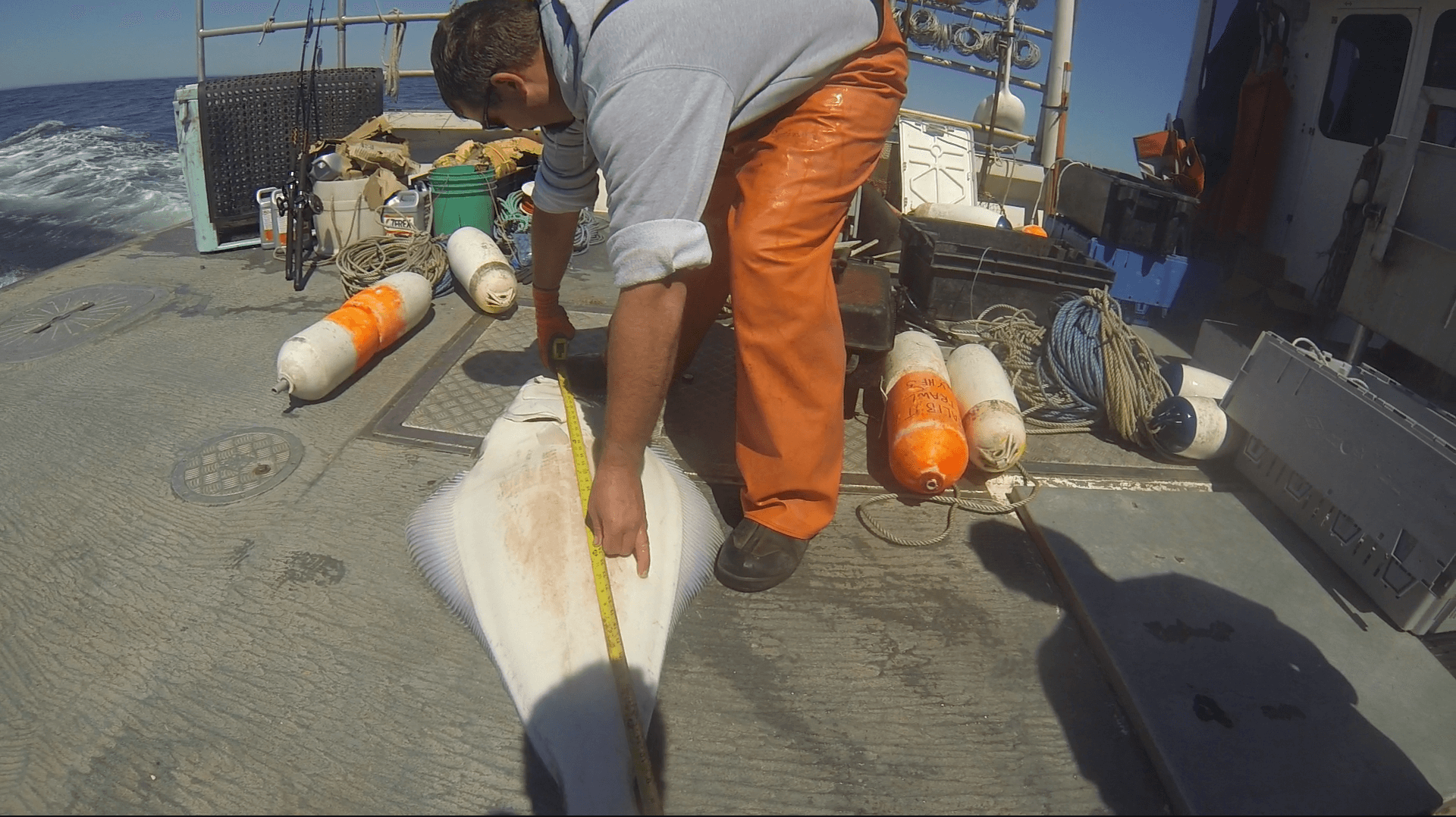
As the state halibut season sets to close, our community reflects on a changing year in the fishery. Eastern Maine saw lower state halibut landings and price for the season, a colder spring leading up, and those on the water noticed ramped up enforcement on the three-mile line. The three-mile line divides state and federal waters and regulators on either side have found themselves at odds.
Federal and State Conflict
Managers have scrambled to find a solution, as increased landings by the state fishery have threatened negative implications for federal fishery management.
The state halibut fishery, which is managed within the federal fishery, allows access to 25 halibut over a short, two-month season. At the federal level, halibut is assessed and managed as part of a stock complex of groundfish, along with haddock, hake, and cod. Halibut is generally not a targeted catch in the federal fishery, but rather a valuable bycatch limited to one fish per trip.
The federal assessment determines how many fish are available to Maine’s halibut fishermen, so while state and federal waters are managed independently, there are a few points of intersection, where the regulating bodies are still wholly dependent on one another.
Notably, Maine has seen a steady increase in halibut landings over the past five years as more fishermen are acquiring state licenses and catching halibut. The increase signals improvements in inshore (state) halibut abundance – a testament to Maine’s local and small-scale fishing approach. However, the large volume of state landings threatens to exceed the acceptable biological catch (ABC) set by federal regulators, and possibly trigger strict accountability measures (AMs). Accountability measures would prohibit halibut landings in the federal fishery and place gear and area restrictions on groundfishing in federal waters.
Push Comes to Shove
Following conversations between the federal New England Fishery Management Council and the Maine Department of Marine Resources (DMR), DMR Commissioner, Patrick Keliher, agreed to prohibit the possession of halibut in all federal waters. This decision was motivated by growing political, not biological, pressure to address rumblings of illegal catches in federal waters.
Much of the dock talk around this season’s ruling has focused on islands like Mount Desert Rock. Although Mount Desert Rock is surrounded by state waters, it is 26 miles from the nearest harbor and fishermen must transit federal waters in order to access the popular fishing area. DMR’s ruling effectively shut down fishing near Mount Desert Rock, as fishermen could not transport halibut back across federal waters, even with their gear stowed. Community rumblings about “The Rock” have marked a point of confusion. Fishermen reported a strong stock of smaller-sized halibut in previous seasons, leaving many surprised that they’re now facing restrictions.
While restrictions are typically associated with biological management, really, what fishermen have faced this season, is a conflict between state and federal regulations – a distinction that has not been clear to most on the water.
Regulating Blind
The friction between state and federal management is exacerbated by the fact that little is known about halibut life history. The last halibut assessment, in 2015, was rejected because of poor data quality. Halibut are difficult to evaluate – the mystery surrounding their migration, spawning, and feeding behavior leave scientists with large holes in the biological traits of the species. Halibut assessments have also relied on federal and regional trawl surveys, but trawls aren’t good at catching halibut. From conversations with fishermen, it is clear that there is a growing demand for better data; that the current assessments are not sufficient.
Without solid data to drive management decisions, the New England Fishery Management Council asked Paul Rago, formerly of the Northeast Fisheries Science Center, to develop alternative techniques for assessing halibut. Maine Center for Coastal Fisheries (MCCF) is pleased to be a part of these conversations. Our Sentinel Survey, which kicked off another season of data collection last week, uses longline and jig gear to gather groundfish samples – including halibut – in areas trawling methods can’t adequately cover. Our Sentinel Survey work, along with the University of Maine, provides an opportunity to contribute meaningful data to future management decisions of the fishery.
Access to improved assessments would likely confirm the belief that halibut populations have increased in recent years. If the data could show this, ABC thresholds could increase, the triggering of AMs could decrease, and tensions between the two jurisdictions may ease.
For more information on the Sentinel Survey, visit our website.
